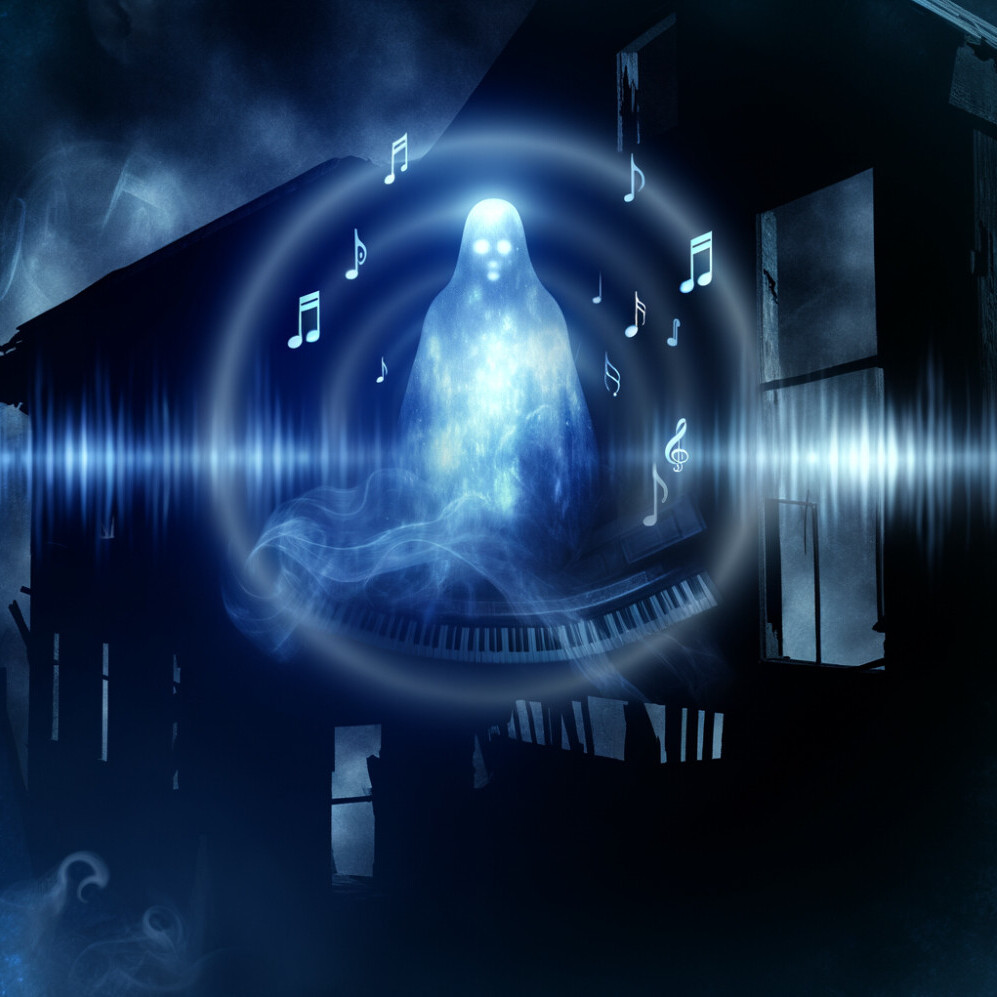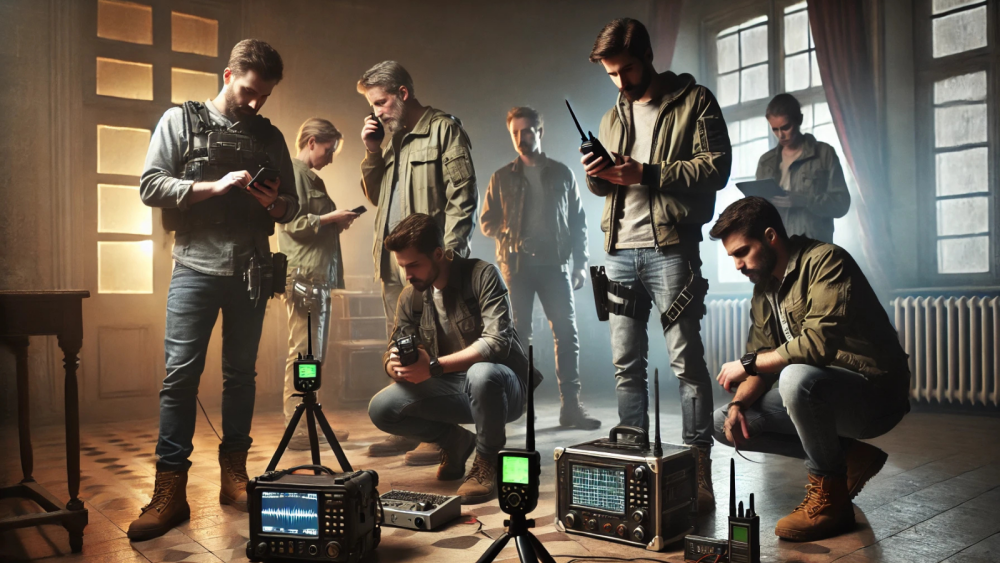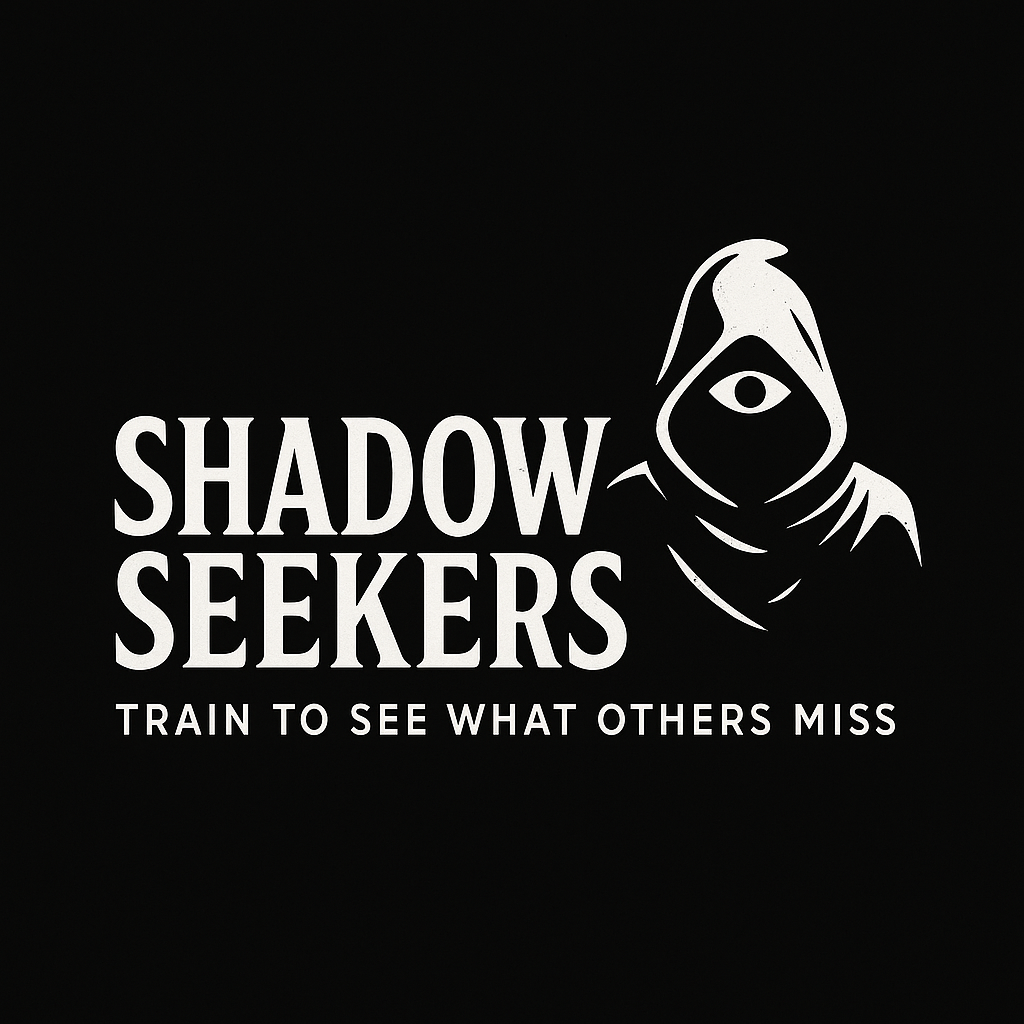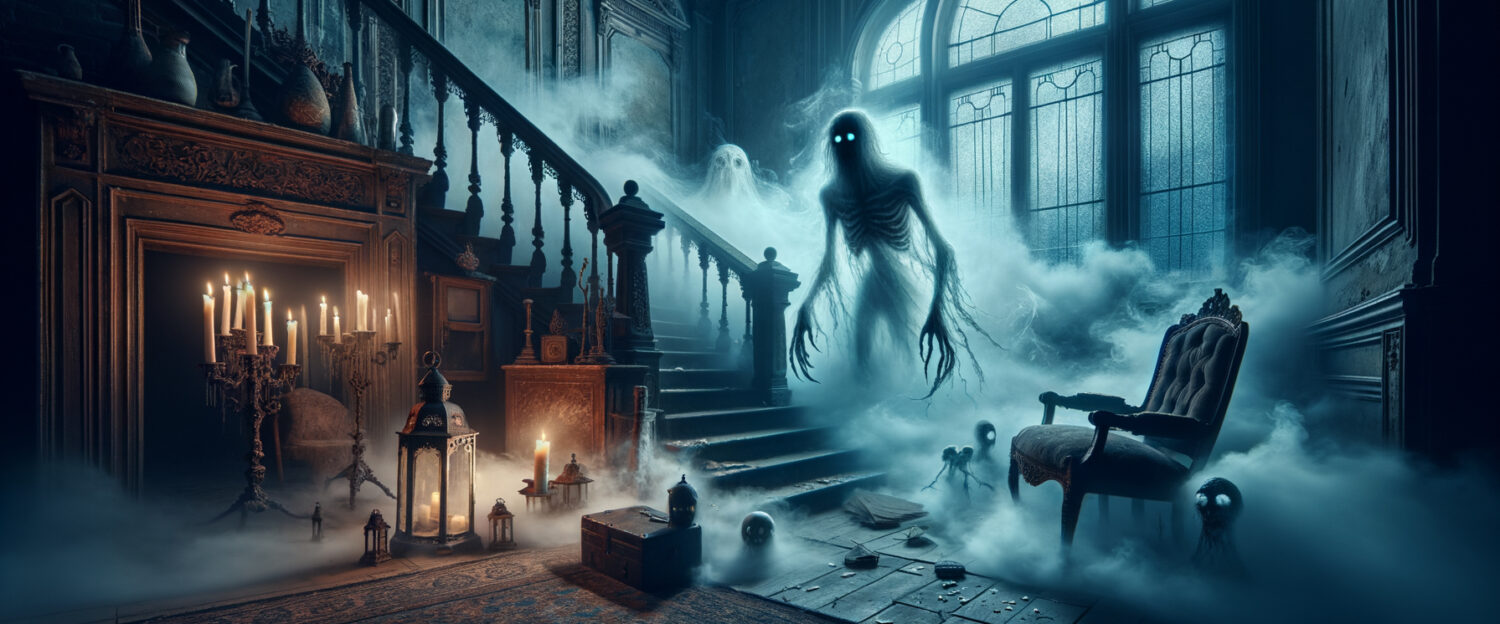
How to Conduct a Thrilling and Successful Paranormal Investigation: A Ghost Hunter’s Ultimate Guide Ever dreamed of stepping into the world of ghost hunting and unraveling the mysteries of the unknown? Whether you’ve been binge-watching Ghost Hunters or you’ve always felt a pull toward the paranormal, now’s your chance to dive into the eerie and electrifying world of paranormal investigations.
Paranormal exploration isn’t just about chasing shadows or hoping for a ghostly encounter; it’s an exhilarating blend of adventure, science, and spine-tingling discoveries. Imagine the adrenaline rush as you listen to mysterious whispers on an EVP recorder or catch an unexplained figure on camera. Sound exciting? Good—because this guide will help you turn your curiosity into action!
Get ready to grab your gear, sharpen your senses, and step boldly into the unknown as we explore everything you need to know about conducting a successful paranormal investigation.
What Is Paranormal Activity? Unraveling the Mystery

Before you pack your bags and head to the nearest haunted house, it’s crucial to understand what you’re dealing with. Paranormal activity refers to events that defy logical explanation—ghostly apparitions, eerie sounds, sudden temperature drops, and mysterious shadows.

Hey there! I’m Shawn,
Greetings, fellow seekers of the unknown!
I wanted to give you a quick heads-up about some of the links you’ll find throughout this site. Many of them are Amazon Associates affiliate links, carefully chosen to complement your paranormal adventures. Whether you’re browsing my own books on Bigfoot, cryptids, and supernatural mysteries—or checking out gear to enhance your ghost-hunting toolkit—these links are designed to fuel your curiosity about the unexplained.
You’ll also discover recommendations for Kindle Unlimited reads that dive deep into ghost stories, UFO encounters, and otherworldly phenomena. Plus, I’ve highlighted essential equipment for paranormal investigations, Bigfoot research, and exploring haunted locations. My goal is to provide you with the knowledge and tools needed to make your journey into the unknown truly thrilling.
What does this mean for you? If you click on an affiliate link and make a purchase, I may earn a small commission at no extra cost to you—whether through Amazon Associates or Wealthy Affiliates. This support helps keep this site running and allows me to continue sharing resources, tips, and insights into the world of the paranormal.
Remember, you’re never obligated to buy anything. The links are free to explore, and all the information on this site is here to inspire and inform. I only recommend products and books that I truly believe in and use myself.
Transparency is important to me, so feel free to reach out if you have any questions or concerns about this disclosure. You can also connect with me through email or learn more about my journey on my Gravatar page.
Thanks for being a part of this paranormal community—let’s keep exploring the mysteries of the unknown together!
Shawn Thomas
Owner of Paranormal Curiosities realm and Wildfoot Myths
Hope you enjoy the blog!
Think of it as stepping into a realm where science struggles to keep up. Some common terms you’ll encounter include:
• EVP (Electronic Voice Phenomena): Ghostly voices captured on audio recordings.
• EMF Spikes: Electromagnetic field fluctuations that might signal a presence.
• Cold Spots: Sudden temperature drops are often associated with spirits.
• Orbs: Light anomalies appearing in photos or videos, believed by some to be energy forms.
But don’t let your excitement get the best of you! Paranormal investigations require a sharp eye and a skeptical mind. Was that creak just an old floorboard settling—or something more? Separating natural occurrences from potential hauntings is half the battle.
Setting the Standard: Professionalism in Paranormal Investigations
Ghost hunting may be thrilling, but professionalism is the key to gaining credibility—and keeping doors open to haunted locations.
1. Respect the Space. Always get permission before investigating private property, and never disturb historic landmarks or sacred sites. Treat spirits (if present) with the same respect you’d show a living person.
2. Gear Up. Bring extra batteries, a notepad for observations, and reliable tools like EMF meters and voice recorders. Nothing kills momentum faster than dead equipment in the middle of the night!
3. Transparency Matters. Be honest with property owners, witnesses, and teammates about your intentions and findings. Building trust leads to more opportunities for investigations.
4. Leave No Trace. Paranormal investigations should never damage property or leave messes behind. Clean up and restore the location to its original state.
Your conduct can make or break your reputation as an investigator. Keep it professional, and you’ll earn respect in the field while keeping the thrill alive.
Prepping for the Paranormal: How to Get Ready

Preparation is your secret weapon when stepping into the supernatural. Here’s how to make sure you’re ready for anything:
1. Do Your Homework. Research the location’s history, urban legends, and eyewitness accounts. Knowing what to expect can shape your approach and give you clues about what to look for.
2. Gather Your Gear. Must-haves include:
• EMF Meters – Detect electromagnetic energy shifts.
• Digital Voice Recorders – Capture EVPs.
• Cameras – Snap photos and videos to document findings.
• Infrared Thermometers – Monitor temperature changes.
• Flashlights – For navigating dark spaces.
• Notebooks – To log observations and events in real time.
3. Test Everything. Check your equipment before heading out. Dead batteries or malfunctioning devices can ruin an investigation.
4. Pack Smart. Bring snacks, water, and first-aid kits for long investigations. And don’t forget backup lights—you’ll thank yourself later.
Location, Location, Location: Picking the Perfect Haunt

Choosing the right location can make or break your investigation. Look for spots rich in history, urban legends, or reports of unexplained activity. Think haunted mansions, abandoned hospitals, or eerie forests.
Tips for Scouting Locations:
• Historical Research: Dig into archives and records to uncover past tragedies or significant events tied to the location.
• Eyewitness Reports: Interview locals about strange occurrences or personal encounters.
• Urban Legends: Local myths often contain a nugget of truth worth investigating.
• Accessibility: Make sure the site is safe and legal to explore.
Knowing a location’s backstory not only prepares you for what to expect but also deepens your connection to the investigation.
Building a Paranormal Investigation Team: Strength in Numbers

Paranormal investigations are rarely solo missions. While it may seem thrilling to venture into the unknown alone, assembling a strong, well-prepared team dramatically boosts your chances of success. A team not only provides safety in numbers but also brings diverse skills and perspectives to the investigation.
Key Roles in a Paranormal Investigation Team
- Team Leader:
- Oversees the investigation and maintains the schedule.
- Delegates tasks and ensures everyone stays focused and safe.
- Acts as the primary contact for property owners and authorities.
- Equipment Specialist:
- Manages and operates technical gear such as EMF meters, digital voice recorders, thermal cameras, and motion detectors.
- Ensures all equipment is tested and functioning before investigations.
- Researcher:
- Investigates the history of the location, including past events, urban legends, and known haunting’s.
- Gathers maps, property records, and witness statements.
- Audio/Visual Analyst:
- Records video and audio during the investigation.
- Reviews and analyzes recordings for evidence after the investigation.
- Empath/Medium (Optional):
- Provides intuitive or psychic impressions that may guide the team’s focus.
- Serves as a secondary method of data collection for validation purposes.
Preparing Your Team for Success
- Training and Practice: Conduct practice investigations to build rapport and communication among team members. Familiarize everyone with the equipment and protocols.
- Communication Tools: Use radios, walkies-talkies, or mobile apps to stay connected during investigations, especially in larger or multi-level locations.
- Safety Protocols: Establish emergency plans and make sure everyone carries essential supplies such as flashlights, first-aid kits, and extra batteries.
- Role Assignments: Clearly define roles before heading out to avoid confusion and keep the operation organized.
Benefits of a Team Approach
- Collaborative Problem-Solving: Different viewpoints help identify patterns and solve mysteries more effectively.
- Cross-Validation: Evidence collected by multiple people adds credibility and reduces the risk of false positives.
- Emotional Support: Paranormal investigations can be intense. A supportive team helps maintain composure and morale.
Final Thoughts
Building a reliable and well-rounded paranormal investigation team is a critical step toward conducting thorough and credible research. Each member should complement the others, ensuring that the group operates like a well-oiled machine. With preparation, trust, and cooperation, your team will be ready to uncover the mysteries that await.
The Investigation: Action in the Shadows

Now comes the heart-pounding part—putting your preparation into practice.
Step 1: Set Up Your Gear. Place cameras, audio recorders, and sensors in areas where activity is most likely based on prior research. Pay special attention to cold spots and EMF spikes.
Step 2: Stay Alert and Observant. Paranormal activity doesn’t run on a schedule. Be patient and log every sound, movement, or fluctuation in equipment readings.
Step 3: Collect Evidence Carefully.
• Record EVP sessions by asking clear questions and leaving time for responses.
• Take photos frequently—especially if you feel sudden chills or hear noises.
• Cross-check readings from multiple devices to confirm anomalies.
Step 4: Analyze the Data. Review all recordings, photos, and notes after the investigation. Patterns may emerge that weren’t obvious during the moment.
Wrapping Up: What’s Next?
Not every investigation will yield clear answers, and that’s okay. Paranormal research is a journey of curiosity, discovery, and sometimes more questions than answers. Each experience sharpens your skills and brings you closer to understanding the unknown.
So, whether you uncover chilling EVPs, capture unexplained shadows, or simply experience an eerie stillness, embrace the thrill and mystery of it all. Paranormal investigations combine science, history, and adventure—making them as rewarding as they are spooky.
Ready to step into the shadows? Grab your gear, rally your team, and set off on your next paranormal adventure. The truth might just be waiting for you in the dark!
For those looking to dive even deeper, my book Paranormal Curiosities: Realm Uncovered—How to Investigate Ghosts, Spirits, and Supernatural Activity is an essential tool to have by your side. Packed with insights, techniques, and practical advice, it’s the perfect guide to help you on your journey into the unknown.
Don’t forget to share your ghost-hunting tales in the comments below! Whether you’re a seasoned investigator or a curious beginner, we’d love to hear your spine-tingling stories and experiences. Keep exploring—and stay spooky!



Wow, this is an exciting and comprehensive guide for anyone interested in paranormal investigations!
It’s great to see the emphasis on professionalism and respect for the spaces and entities you might encounter.
A quick question: any tips on how to handle fear or anxiety that might arise in such situations?
Thanks for sharing this interesting knowledge with us!
Hi Shaun,
Thank you so much for your kind words! I’m thrilled to hear you found the guide exciting and comprehensive. Maintaining professionalism and respect during paranormal investigations is indeed essential, and it’s great to see that resonated with you.
As for handling fear or anxiety, that’s a fantastic question! Fear is a natural response in such situations, but here are a few tips that might help:
Preparation is Key: Knowing your equipment, the location, and what to expect can greatly reduce uncertainty, which is a big contributor to fear.Grounding Techniques: Simple practices like deep breathing or mindfulness can help you stay calm and focused during tense moments.Stick Together: Always investigate in a team. Having others around you not only adds to safety but also provides emotional support.Rely on Logic: If you hear or see something unexpected, try to rule out natural causes first. A logical approach can help you regain control over your emotions.Know Your Limits: If a situation becomes overwhelming, it’s okay to step back and regroup. Your safety and mental well-being should always come first.
I hope these tips help! Thanks again for taking the time to leave such a thoughtful comment. If you have any more questions, feel free to ask—I’m always happy to chat about the paranormal!
Best,
Shawn
Hey, Shawn,
Your article grabbed my attention by the horn! I was so lost in it that time flied. For the first time to read about paranormal, my perception was that these kinds of tales were only for African mythologies or primitive folks. It’s amazing and encouraging at the same time that we humans share a lot in common, including but not limited to the belief in the supernatural or paranormal world, living besides the physical/natural.
Your imagery is also relevant to the topic and it’s captivating to the eyes and hearts. My science (natural sciences) mentality would always try to ignore or explain such scenes in a natural way. For example, maybe the person who saw something supernatural was scared, and therefore made things up, or saw things in his/her mind instead.
However, your article makes things so real that I am interest to learn more.
John
Hi John,
Thank you so much for your thoughtful and insightful comment! I’m thrilled to hear that my article captured your attention and resonated with you. It’s fascinating how stories of the paranormal transcend cultures and continents, showing just how connected we all are in our curiosity about the unknown.
I completely understand the scientific perspective you mentioned. It’s natural to seek logical explanations, but sometimes the mysteries we encounter defy conventional reasoning—making them all the more intriguing. That’s what keeps me so passionate about exploring and writing about these topics.
I’m glad my imagery and storytelling drew you in and made the subject feel real and relatable. There’s definitely so much more to uncover, and I’d be honored to have you along for the journey as we continue to explore the paranormal world together.
Thanks again for sharing your perspective, John. I look forward to hearing more of your thoughts in the future!
Best regards,
Shawn
This comprehensive guide to paranormal investigations is incredibly insightful. I’m curious about the role of empath/mediums in investigations and how their impressions are validated. What are some best practices for integrating intuitive insights with scientific data, and how can teams ensure that these contributions enhance rather than compromise the investigation’s credibility?
Thank you so much, Cyril, for your thoughtful comment and excellent question!
Empaths and mediums can play a fascinating role in paranormal investigations, offering intuitive impressions that sometimes align with scientific data and physical evidence. To validate their insights and integrate them effectively, teams often follow these best practices:
Document Everything – Ensure all impressions shared by the empath/medium are recorded in detail, including time, location, and context. This helps establish patterns or correlations with other evidence collected.Cross-Validation – Compare their impressions with data from EMF detectors, EVP recordings, temperature fluctuations, and video/audio evidence to identify matches. For example, if a medium senses a presence and an EMF spike is recorded simultaneously, it adds credibility.Blind Testing – Keep the medium unaware of the location’s history or prior activity reports to prevent biases. Their impressions can then be analyzed against known facts revealed later.Control Groups – Use non-sensitive individuals in the same space to compare reactions and avoid over-reliance on subjective feelings.Collaborative Analysis – Treat intuitive insights as clues rather than conclusions, combining them with scientific methods to guide further investigation rather than replace evidence.
By balancing intuitive insights with scientific rigor, teams can add depth to their investigations while maintaining credibility and objectivity.
Thanks again for raising such an important topic—I’d love to hear your thoughts on this approach!
Thanks Shawn